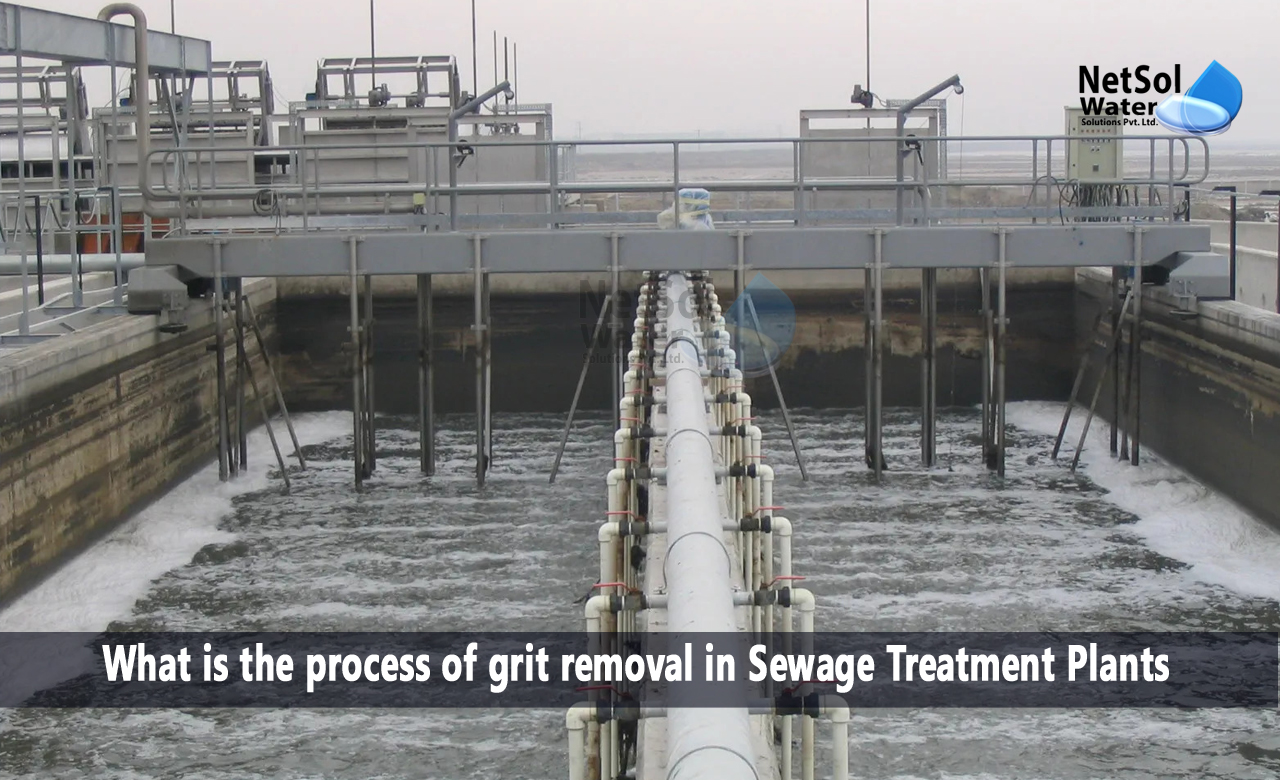Grit removal facilities normally come after screening and comminution and before primary clarifying. This keeps big solids from getting in the way of grit handling machinery. Let’s look at the process of grit removal in STPs.
What is the process of grit removal in STP?
Sand, gravel, cinder, and other heavy particles that are "heavier", i.e., have a greater specific gravity than the wastewater's organic biodegradable solids, are referred to as grit. Grit also comprises large organic particles like food waste as well as eggshells, bone chips, seeds, and coffee grounds.
Why is grit removal necessary?
Grit accumulation in anaerobic digesters and aeration basins, grit deposition in pipelines and channels, and unnecessary abrasion and wear of mechanical equipment, are all prevented by the removal of grit.
The process of grit removal in STPs
For grit removal, many processes or equipment’s are employed. Grit being heavier than organic materials, which should be kept in suspension for treatment in future processes, it forms the basis for all of the procedures.
Grit removal can be carried out via centrifugal sludge separation or grit chambers. To separate the solids from the wastewater, processes use centrifugal force, aeration, gravity, and velocity.
Types of Grit Chambers
· Aerated Grit Chamber
In aerated grit chambers, grit is eliminated by spiralling the wastewater flow. A perpendicular spiral velocity pattern flows through the tank as a result of air, being fed into the grit chamber along one side.
As lighter organic particles are suspended and eventually carried out of the tank, heavier particles are propelled and diverged from the streamlines, falling to the tank's bottom.
· Vortex-Type Grit Chamber
In the cylindrical tank that makes up the vortex-type grit chamber, the flow enters tangentially to produce a vortex flow pattern. When effluent exits the tank at the top, grit settles by gravity into the bottom of the tank in a grit hopper. A grit pump or an air lift pump can be used to remove the grit that collects in the grit hopper.
· Horizontal Flow Grit Chamber
By sustaining an upstream velocity of 0.3 m/s (1 ft/s), grit is eliminated. Proportional weirs or rectangular control sections, like Parshall flumes, are used to regulate velocity. In this arrangement, the lighter organic particles are carried out of the channel, while the heavier grit particles settle to the bottom of the channel.
A conveyor that has scrapers, or buckets, removes the grit. The grit is elevated for washing or disposal using screw conveyors or bucket elevators.
Factors to consider while selecting the best method for the grit removal
When choosing a grit removal method, a number of aspects must be taken into account, including the amount and nature of the grit, potential negative impacts on downstream operations, head loss requirements, space requirements, removal efficiency, organic content, and cost.
The kind of grit removal system used for a particular facility should be the one, which strikes the optimal balance between these various factors.
Conclusion
Inorganic suspended particles are removed from wastewater using the grit removal procedure. In order to remove grit, a settling tank is commonly used, where the heavier particles sink to the bottom and the lighter ones are skimmed from the top.
The heavier particles are subsequently separated using mechanical or physical methods, such as hydrocyclones, screens, or sedimentation tanks. Following separation, the grit is often dumped in a landfill or recycled for use in a variety of industries.
What do we offer?
Netsol Water is the best manufacturer of water and wastewater treatment plants in India. We ensure that the best procedures are provided in our sewage treatment plants and effluent treatment plants.
As we know grit's quantity, properties, and propensity to harm downstream processes must all be taken into account when choosing a grit removal method, therefore, we also take additional factors into account which include the need for head-loss, the need for space, removal efficiency, organic content, and economics. For expert advice, contact us at +91 9650608473 or enquiry@netsolwater.com



